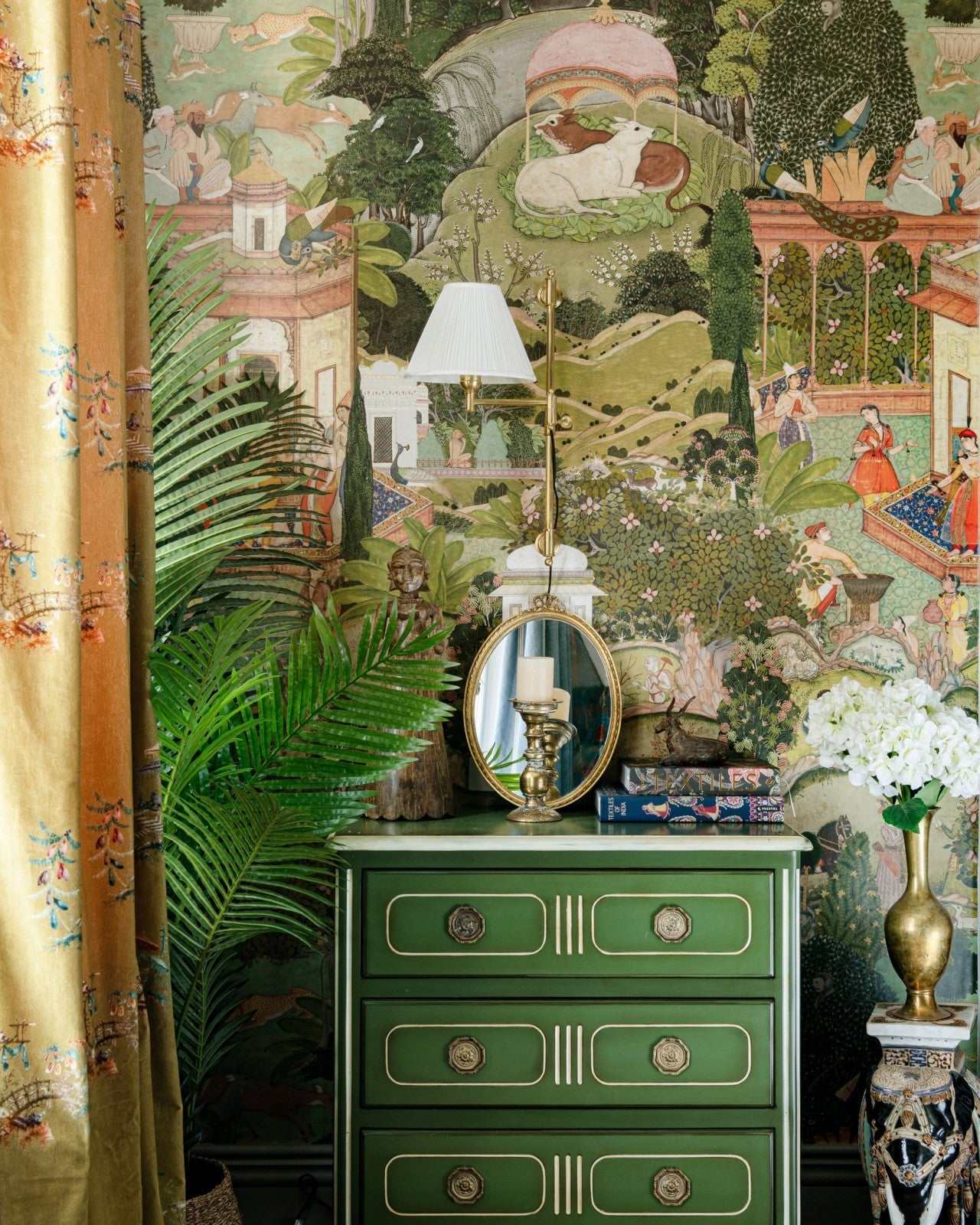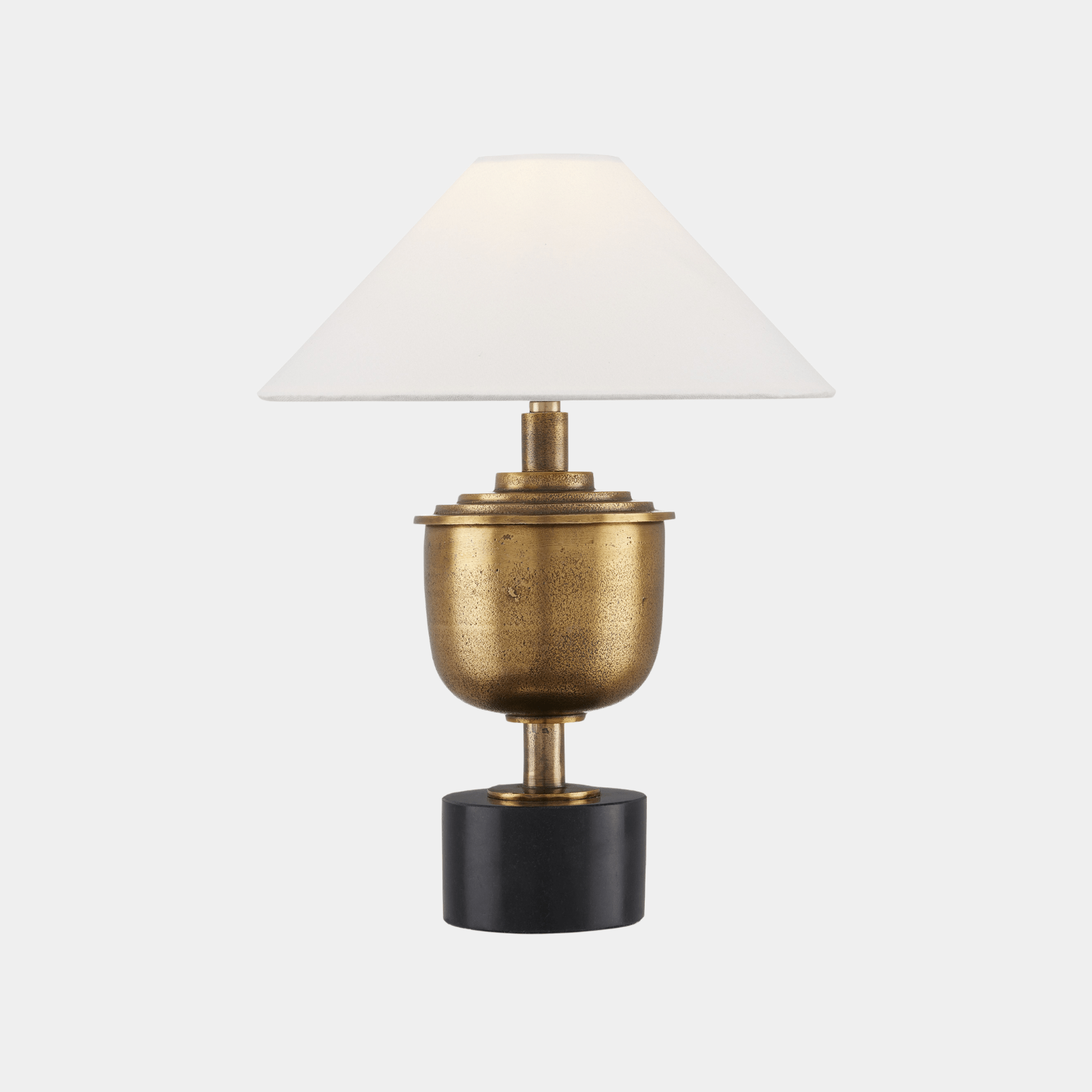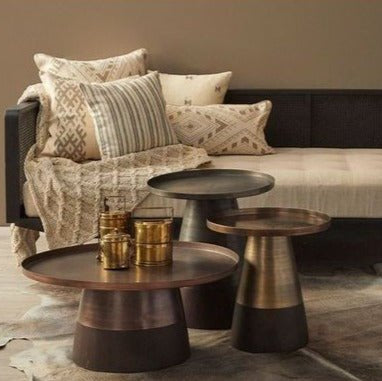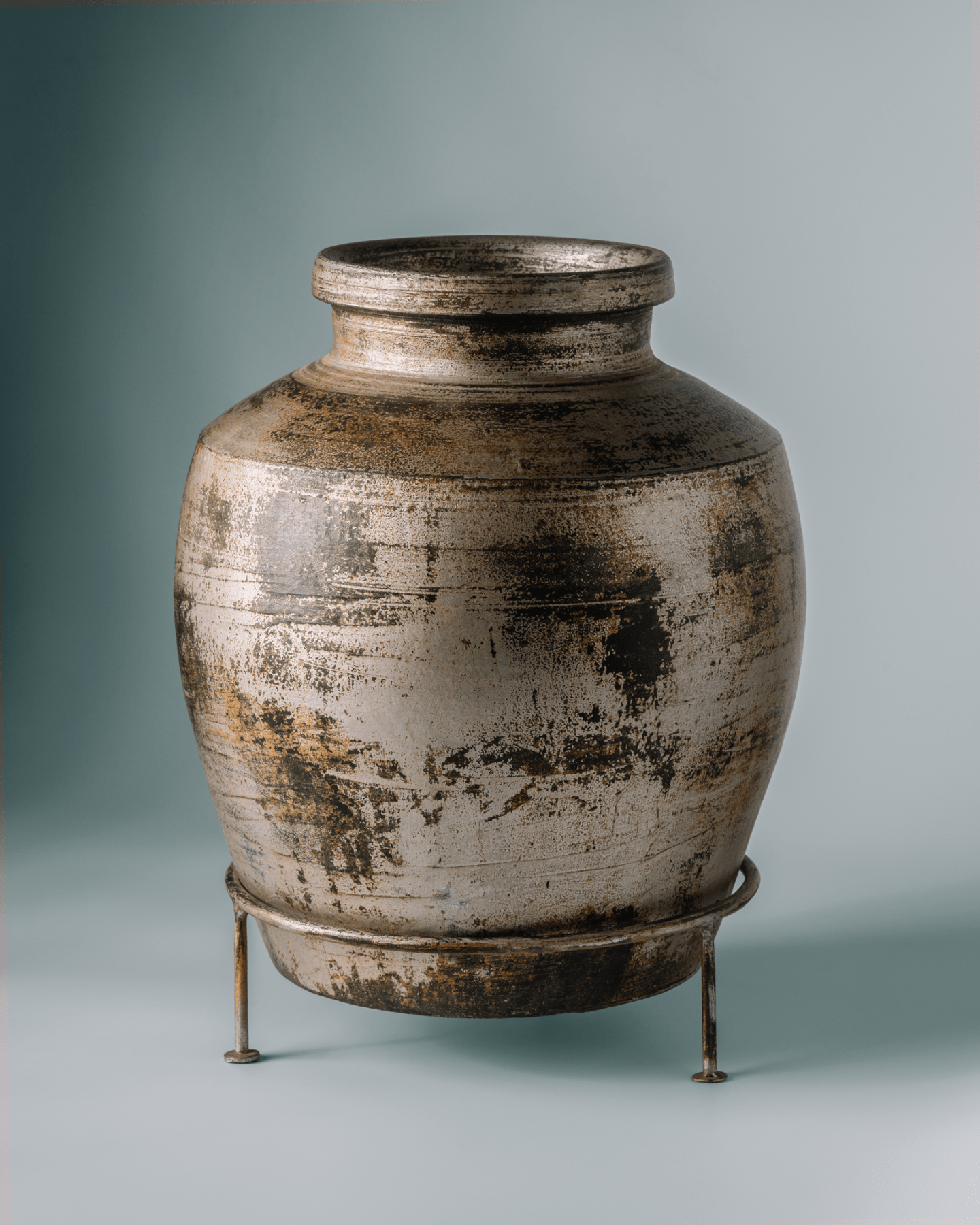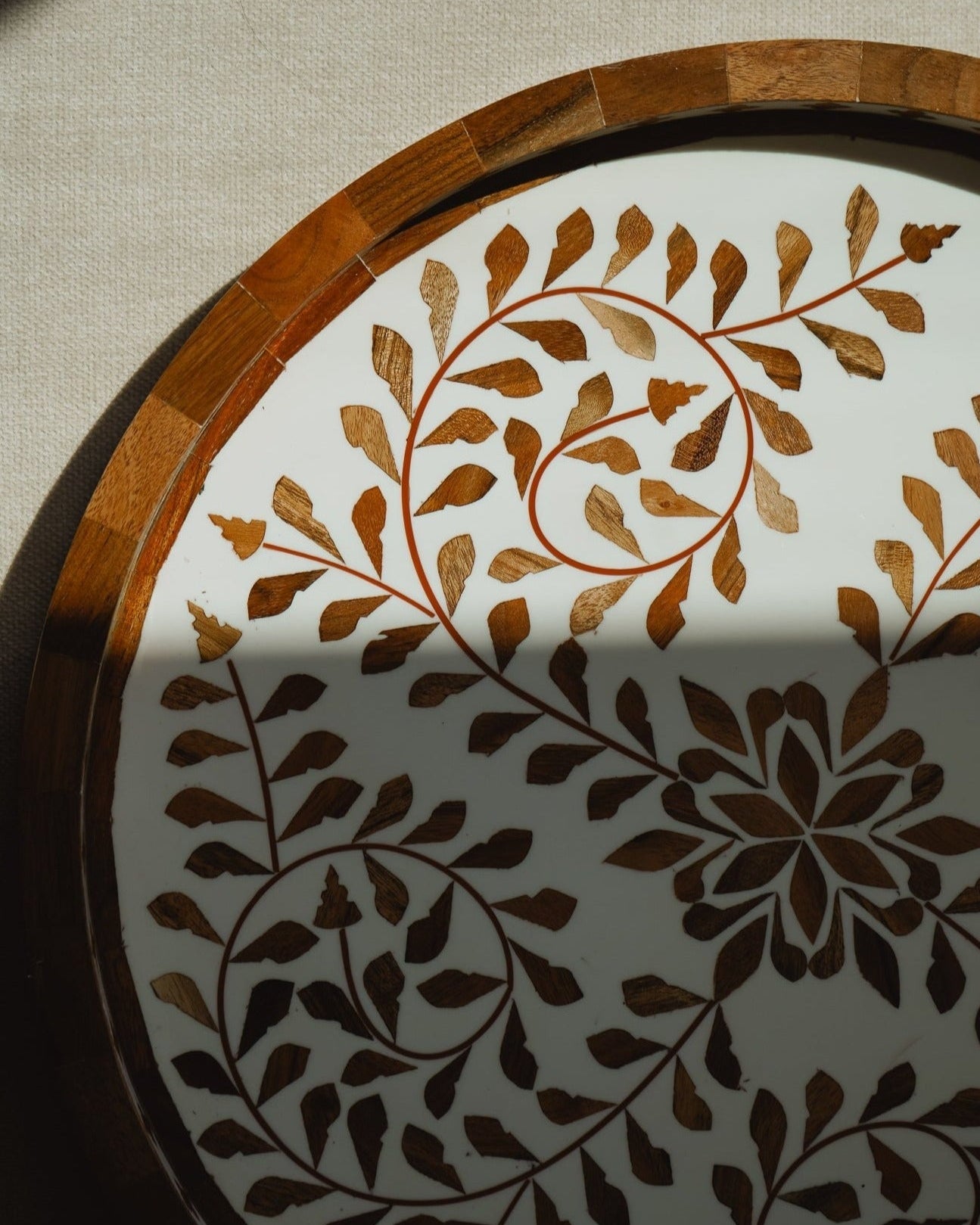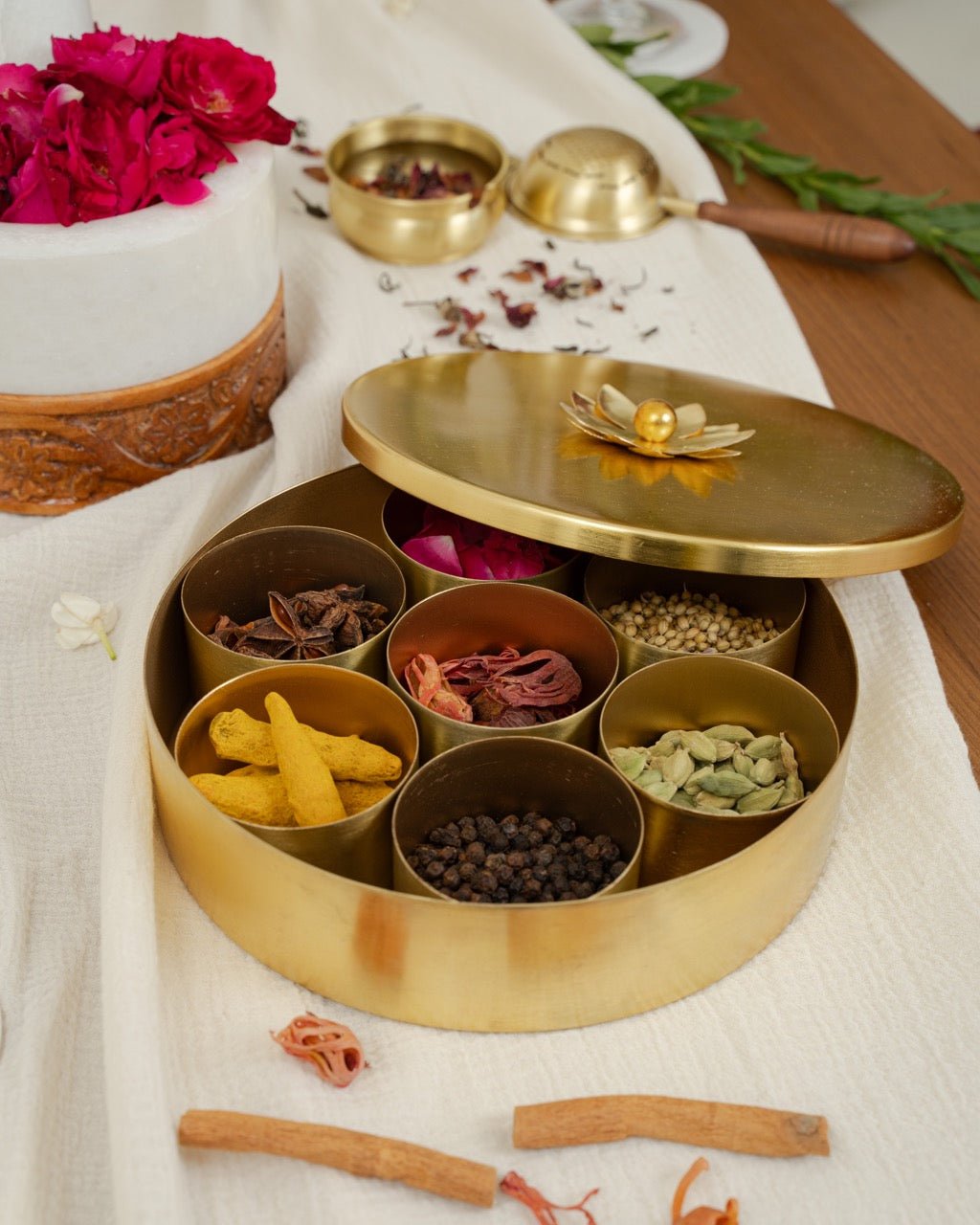Behind every product sold at Marble Lotus, there exists a story that holds rich cultural prominence. From our Pichwai paintings that include subtle nods to Lord Krishna’s youth to the Namesake Collection that nods to Rajasthani artisans, we take great interest in getting to know the mind behind the art. Our latest Kasavu collection elicits a response that is no different. Ammu Cherian, founder, and CEO of House of Amu, brought the new Kasavu pillowcase collection to Marble Lotus.

Kasavu refers to the textile technique used by handlooms to weave gold and white fabrics into silk sarees, a design that is unique to the Indian state of Kerala. Ammu has a Kerala heritage but was born and raised in Muscat, Oman.
She eventually moved to India where she pursued higher education in Kerala, and got married in Bangalore, Karnataka. She moved to the United States in 2016 and now lives in Wisconsin with her husband and two children. Ammu’s journey all over Asia and her strong connection with her family constantly inspire her art and are reflected throughout her home decor.
Amu’s husband and kids are her biggest supporters as she continues to build House of Amu. However, her interest in art and design stemmed from a young age and was nurtured by her own hobbies. In her free time, she loves sewing clothes, experimenting with baking, cooking, and gardening. Ammu’s eye for design flourished through engaging in several creative activities.

Since her childhood, she’s always had a liking for Indian textiles. Her shop features several home decor items such as pillowcases (see above), table runners, and other linens that craft vibrant Indian designs into household items. Besides her very own Kasavu and lumbar pillows, Ammu rests her family pictures on a dhurrie (the Indian and Pakistani term for a handwoven thin flat carpet), which has been repurposed as a tablecloth. The various textiles from her own storefront and trips around the world, paired with the gold clock from her local fabIndia store bring an antique and regal finish to her living room.
Ammu’s South Asian heritage is an identity she holds close to her heart -- and home. In regard to designing her home, she reflected: “In my opinion, my home should be a reflection of myself and my family. Our interests, travel, and personality, that's how it becomes a personal sanctuary. Keeping that in mind, I knew I had to find ways to incorporate India into my home.” One of the most eye-catching features of Ammu’s home is her intricate accent wall (painted by Ammu herself!) (see below).

The tesselation-like pattern is inspired by the engraved door at the Al Bhustan Palace in Muscat, Oman, her birthplace. Ammu said: “I have so many memories as a child visiting the palace and always being amazed by the opulence and intricacies of the design of the palace. Islamic architecture is absolutely stunning and is so rich in detail. I'm so glad I was able to incorporate this phase of my life into this room.” The deep tones in the paint are offset by a tan lounging cane sofa. Cane furniture, originating in several Asian countries and extremely popular in India, is the concept of splitting canes across a mesh surface into seating pieces. When it comes to defining her style, Ammu says: “I think I am still figuring out my style, and truth be told; it has evolved so much through the years. I love finding unique items from the places I travel. Whether it be fridge magnets, coffee mugs, table linens, or small tchotchkes to display on shelves.”

Ammu’s decor style perfectly intersects with the Marble Lotus mission. Despite her fluctuating and evolving taste, her goal always remains to build a personal, reflective, and luxurious home. Adjacent to a deep teal wall, Ammu’s placed a classic wooden bookcase that houses trinkets from various times and previous homes in her lifetime. Adding to her array of textiles and greenery, she has a block print fabric framed aside by a winding leaf stem. The central point of her bookcase is the framed Khanjar. As explained by Ammu, the khanjar is a traditional Omani dagger that native Omanis carry with them on special occasions. Scattered throughout the remaining gaps on the shelves, are the children’s picture book Library Lion and other novels that are easy to grab for a bedtime read for Ammu’s 4-year-old and baby.
Ammu’s craftsmanship in textiles truly manifests in every corner of her home. When we asked her if she had insight for someone wanting to incorporate South Asian culture into their home, she advised: “Find pieces that reflect you and your memories/ identity of India instead of the cliche Indian products. It's always good to start small with things that feel right and build on the collection.” Aligning herself with cliche, mainstream Indian decor was something Ammu refused to do, and exploring regional textiles and fabric work helped her find her design niche. Exploring zari, mirror work embroidery, and different block print designs from all over India showed Ammu how much diversity existed in Indian home art. Her wooden mirror, which she sourced from India, sits above another table runner that brings bright warm colors into her home. Resting on the table is a green wooden letter block: Aa, the first letter of the Malayalam alphabet, and the first letter of Ammu’s name. (See below)

Around Ammu’s home is color, vibrancy, history, regional distinctiveness, but most importantly: signals of her own story and journey. She constantly strives for her home to be an environment that invites dialogue, curiosity, visits from her inner child, and peace. Ammu sees South Asian-inspired home decor as an opportunity to connect; it offers a space to share travel memories and life milestones, and in turn, hear about the intriguing details of her guests’ stories. Beyond home decor, Ammu’s cultural background is a pivotal key in her persona. “It gives me a wonderful sense of community and the joy of hearing someone randomly speak Malayalam when I'm out and about, makes me crazy happy, ha!”




